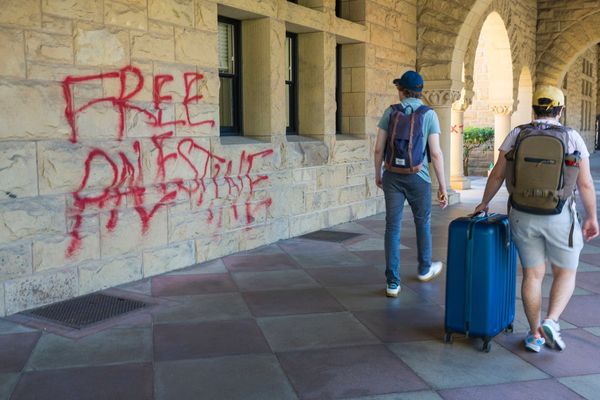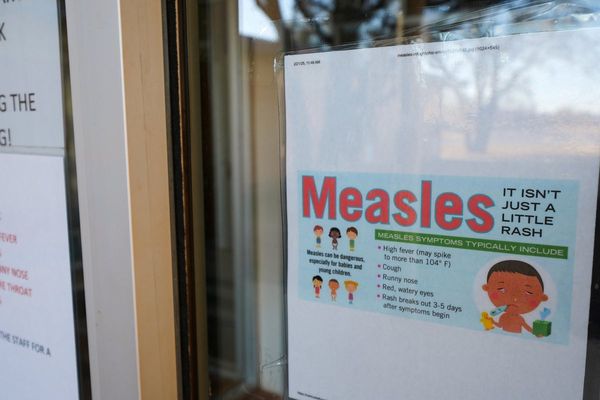ST. PETERSBURG, Fla. — Karen Mathews has heard the story told, repackaged and occasionally garnished plenty of times over the years.
Her husband, Bill, was an Eckerd College freshman in the spring of 1976, when major league players were locked out of their spring training camps as part of a labor dispute — much like the current crew of players will be this week.
Select players from teams that trained in the Tampa Bay area were gathering at the field on Eckerd’s south St. Petersburg campus for daily workouts, a group that included stars such as Lou Brock, Manny Sanguillen, Ted Simmons, Willie Stargell and Joe Torre.
And Bill has a tale involving one of the biggest — Tom Seaver, the Mets ace who was coming off this third Cy Young-winning season.
Seaver was throwing to hitters from the mound when Mathews, a junior varsity infielder at the field to lend a hand where needed, was told to jump into the batter’s box and take some swings.
Mathews asked his coach what pitch to look for. Bill Livesey told him he wouldn’t be able to see it, anyway, wryly suggesting, “something that sounds like a fastball.”
Mathews, a left-handed swinger, got the fastball and, as he tells the story, actually put the ball in play.
“I meekly hit a ball over the third baseman’s head, and it dropped two inches fair,” Mathews said. “I ended up on second base, and my heart’s racing. Seaver turns around, kind of grins and tips his cap. I’m like, OK, that’s it, I’m walking off the field. I want to take up another sport, because I can’t beat this.”
Fast-forward 25 years or so.
The Mathewses were at The Don CeSar hotel on St. Pete Beach for a major league players alumni event, getting some balls signed for their son, Zach, when they spotted Seaver.
Bill headed over and started a long introduction about now being the baseball coach at Eckerd. You won’t remember this, he told Seaver, but during the ‘76 lockout you were among a bunch of players working out there.
“He looks at me,” Mathews said, “and he goes, “Double down the left-field line.’ And I was like, ‘Wow!’ ”
Which allowed Karen to take her big swing.
“My gosh,” she said. “You actually were telling the truth.”
Things will be different
Similar scenes could be playing out soon around the Tampa Bay area, as well as the rest of Florida and Arizona. Spring camps were slated to open this week — the Rays with a workout for pitchers and catchers Wednesday in Port Charlotte — but that won’t happen given the lack of agreement on a new labor deal to end the lockout implemented by the owners on Dec. 2.
Which means players who have offseason homes in Tampa Bay and some of those who play for teams that train in the area, such as the Blue Jays, Phillies, Pirates, Yankees and others, instead will gather at high school and college fields, high-end sports fitness and baseball-specific training centers, and maybe even the batting cages at Clearwater’s Celebration Station ($3 for 25 pitches) to do the work they otherwise would with their teams at their facilities.
“As players, just from a standpoint of being in shape and being conditioned, I think we’re all ready,” Yankees outfielder Aaron Judge said after Thursday’s players union meeting in Tampa.
But for what, and for how long?
Baseball has had eight previous labor disputes, and five (1973, 1976, 1980, 1990 and 1995) had some impact on spring training, as well as residual impact on fans and businesses throughout the Tampa Bay area.
The 1976 lockout, which was resolved in mid-March, produced some other interesting stories.
Seaver, who organized the Eckerd camp, charged the players $5 apiece — up from his original assessment of $2 — to pay for baseballs.
According to the book Almost Yankees, then-Eckerd player Steve Balboni started using the long, heavy bat (36 inches, 36-38 ounces) that led to his prodigious home run production after finding one Stargell left in the locker room during his time at the camp.
Meanwhile, in Tampa, the Reds were first given permission to use the USF field for workouts, then denied due to complaints to the school from what catcher Johnny Bench said were anti-union folks.
Replacement parts
The most controversial spring disruption came in 1995, when teams used replacement players.
Major leaguers had gone on strike in August 1994 — leading to the unprecedented canceling of the World Series — and when they remained off the job, owners instructed team officials to scramble to assemble squads.
The result — a mix of non-prospects from the minors, has-beens and never-weres who were out of the game, plus a few brazen line-crossers hoping it would be their big chance — was not pretty, nor well-received.
“For my 50 years in baseball, that was an experience I’d just as soon forget,” said Mike Jorgensen, the former Cardinals farm director who was tasked with assembling the replacement team at their St. Petersburg camp.
“Everything else was pretty good; that spring was pretty tough. My opening-day pitcher was a stock broker. We had a couple truck drivers. We had a few minor league players we wanted to be careful with, because I knew these guys doing that would not be welcomed in the players association should they make it to the big leagues.”
Among the Cardinals players was Ty Griffin, a former King High star and U.S. Olympian whose career had stalled in the minors. Griffin had been a 1988 first-round pick by the Cubs, taken ninth overall, ahead of future big league standouts Robin Ventura, Charles Nagy and fellow Tampa product Tino Martinez.
Griffin, 27 with a wife and young son at the time, had spent the previous two seasons playing in an independent league. He had been traded by the Cubs and released by the Reds, spending four years in the affiliated minors without getting above the Double-A level.
“I look at it that this is my dream, and my dream fell apart,” Griffin told the St. Petersburg Times at the time. “I’m all for the union. But where was the union two years ago when I got released by the Reds? Two years in a row I put up numbers in the independent league and haven’t gotten a shot with anybody.”
Some striking big leaguers lashed out or ridiculed the replacement players. Griffin said he discussed his position with friends in the majors and they understood his situation.
Players such as Griffin welcomed the fresh chance, as well as the $5,000 signing bonus and promise of $25,000 more if they were on the roster for regular-season games. (The Cardinals were among teams that paid their final 30 players the full amount, anyway, plus a job to play in the minors.)
But there was a distaste for the owners-induced concept throughout the game. Tigers manager Sparky Anderson took a leave of absence rather than be involved, while other managers and coaches, some of whom had been players union reps, made it clear they weren’t happy to be there.
The Orioles, owned by pro-labor unions attorney Peter Angelos, declined to participate. And due to Canadian labor laws, the Blue Jays — in a foreshadowing of their 2021 pandemic plan — were considering playing their regular-season games at their spring home in Dunedin.
Alas, the replacement players never made it to the big stage, as the strike was settled a day before the season was set to start. Some players got the chance to stay and go to to the minors; Griffin spent the year at Double-A, then two more back in independent ball before retiring, never reaching the majors.
Others went back to their real jobs, such as Larry Shikles, the Cards’ scheduled opening day starter, who resumed his career as a financial planner in St. Louis.
A new spring training for the regular players started soon afterward, with opening day pushed back to April 26.
“The whole experience was weird,” Jorgensen said Friday. “It was just crazy.”
And here comes the next spring fling.
———
Information from Tampa Bay Times files was used in this report.







